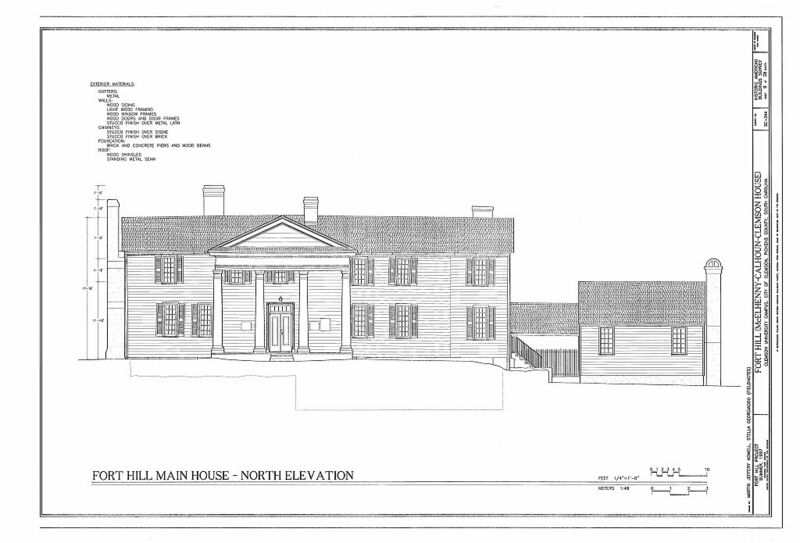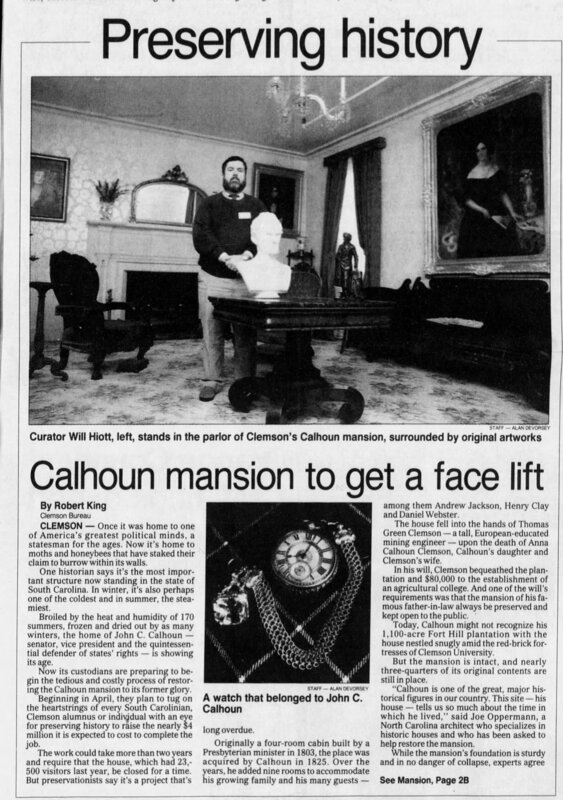Epilogue 1994-2020
The Department came to an end in 1993 after a three-year trial. Interestingly, the year culminated with the end of the first 100 years of Fort Hill as a museum house. Fort Hill as a unit was merged with the Visitors Center into a new Department of Visitor Programs, under the director of Visitor Center Director Janice Moore through 1996. The Assistant Director of Visitor Programs & Visitors Center also held the title of Curator of the former historic houses first Visitor Programs Director Tony McQuirt.
In 1997, Fort Hill became reestablished as a Department of Historic Properties with the curator made director and an administrative assistant under the Director of Guest & Visitor Services reporting to then Guest and Conference Services Director Jeff Martin. In 1998, Fort Hill was reorganized under the Alumni Association Director Debbie DuBose and later interim director of Alumni Association Matt Watkins. Around 2000, the Director of Historic Properties was assigned as a direct report of the Vice-President of Advancement Neil Cameron. This organizational structure existed until 2015 when Fort Hill and Historic Properties remained under the Vice-President of Development and Alumni Relations (DAR) following the split of Advancement under Vice-President Brian O'Rourke.
Highlights of the later years have included multiple conservation and museums studies beginning in 1993 with a Conservation Assessment Program Grant with Shelly Reisman Paine and Architect John Volz, a Historic Preservation Plan by Dr. William Seale and Joe Opperman, an Historic American Buildings Survey (HABS) documentation project in 1997. That was followed by a major restoration of Fort Hill between 2000-2003. Consultants and reports included a Landscape Report by Dale Jaeger, a paint analysis by George Fore, a furnishings plan by Candace Volz. Ellen Pratt Harris, AIA was presented a South Carolina Historic Preservation Award and an AIA Award for the Fort Hill Restoration.
Historic Properties was a collaborator in a Campus Historic Preservation Plan funded by the Getty Foundation which was conducted by John Milner Associates, LLC. The preservation plan included recommendations for not only Fort Hill, but the Hanover House, Hopewell, and the Trustee House.
In the most recent past of the last five years, a Curator of Education & Interpretation was hired in 2017. A Museum Assessment Program grant with Pam Meister was conducted in 2018. A Conservation Assessment Program grant study was conducted by Conservator David Goist, AIC and Architect David Black, FAIA in 2019. In 2020, a Museum Assessment Program Education & Interpretation grant survey with Dr. George McDaniel, formerly of Drayton Hall and Matt Davis of the historic house museums of Georgia College. And a two-year follow up on the 2018 MAP Operational survey was revisited by Pam Meister of Western North Carolina University. A goal of any museum is accreditation by the American Alliance of Museums.
As stated at the onset, Clemson University and Fort Hill are inextricably intertwined. As the burials are discovered at the Woodland Cemetery the life experiences of the enslaved become more timely in the overall legacy of the Calhoun-Clemson Clan as efforts both from the academy and outside raise more questions of why there is an antebellum plantation house up the hill from the stadium at the intersection of Fort Hill Street and Calhoun Drive in Clemson, South Carolina and how the Fort Hill museum perhaps with an interpretive center and adjacent history center can tell the full and complete story of Clemson history.

